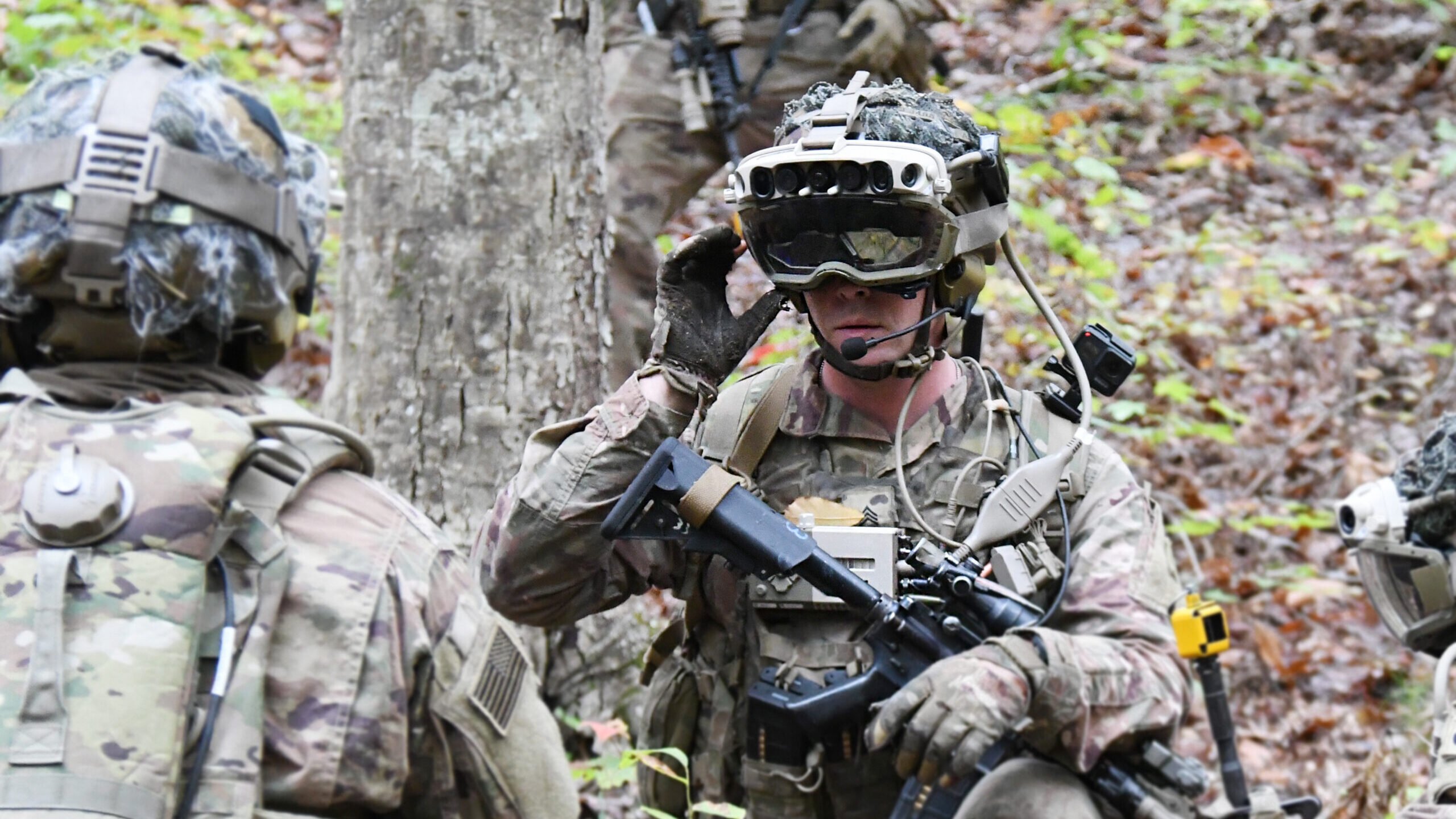
Soldiers from the 82nd Airborne Division used the latest prototype of the Integrated Visual Augmentation System (IVAS) during a trench clearing exercise in October at Fort Pickett, Va.(Bridgett Siter/US Army)
WASHINGTON: While the Army continues to analyze how its next-gen Integrated Visual Augmentation System (IVAS) did in a recent test, Senate lawmakers plan to direct the service not to ditch its current night vision program and, instead, try “mixed-equipping” soldiers with both systems, just in case.
The Senate Armed Services Committee voiced its worry in its version of its fiscal 2023 National Defense Authorization Act, coming after the Army zeroed out funding for the Enhanced Night Vision Goggle-Binocular in its FY23 budget request before the IVAS program passed its initial operational test.
“The committee is concerned about the Army’s decision to terminate procurement of the ENVG-B before the IVAS is fully certified to meet operational requirements,” the Senate report reads.
In its report, SASC members stated that a “recurring comment” from soldiers and junior leaders at IVAS soldier feedback events is that “not all personnel in a close-combat formation should be equipped with IVAS and that equipping select soldiers with alternative night vision and situation awareness equipment could make the formations more combat effective.” The language goes on to direct the Army to experiment with equipping units with a mix of IVAS, ENVG-B and “other elements” of night vision capabilities.
“The committee believes the Army should experiment with mixed-equipping of close-combat formations in order to best inform its IVAS and night vision systems basis-of-issue, procurement decisions, and overarching night vision strategy,” the report states.
IVAS, essentially battlefield augmented reality goggles made by Microsoft, is a top Army modernization priority. The program ran into trouble last year when it delayed its operational test, previously scheduled for last fall, to this summer after field-of-view issues. In May, Army Secretary Christine Wormuth said that the IVAS operational test would determine the future of the program. In a gaggle with reporters on Wednesday, Undersecretary of the Army Gabe Camarillo said that they’re not done analyzing data from the test.
“We’re still working through the results,” Camarillo said, including usability, software stability and how it fits into the force.
Lawmakers on Capitol Hill will be keeping an close eye on those results when they come in. The Senate’s FY23 National Defense Authorization Act adds $75 million back to the ENVG-B program, while the House version added $100 million. The SASC bill report also notes that the committee is concerned that the decision to not fund ENVG-B will hurt supply chains, and it expressed worry that the Army isn’t taking into consideration the “long-term industrial base consequences of their decision.” ENVG-B is made by Elbit Systems of America and L3Harris.
The Army’s budget request called for about $400 million in procurement funds to field 7,000 sets of IVAS goggles to three brigade combat teams. Service officials also said they planned to buy 270 sets of IVAS 1.2, the next iteration of the program.
Asked on Wednesday if the Army considered IVAS a replacement for ENVG-B, Camarillo said the jury is out.
“It’s too early to say that. Obviously, we’re continuing to execute the funding that Congress has given us for the latest generation ENVGs,” Camarillo said.
The answer will likely come out of the Army’s future night vision goggle strategy. The undersecretary said that the service is considering what enduring requirements and right mix of capabilities will be, based on threats, evolving technology, the industrial base and how capabilities will develop over time.
“Rather than lock the Army into one answer at this point in time, I think we’re doing the prudent thing, which is kind of assessing where those capabilities are evolving and where are the needs which are varied across the Army,” Camarillo said.






















